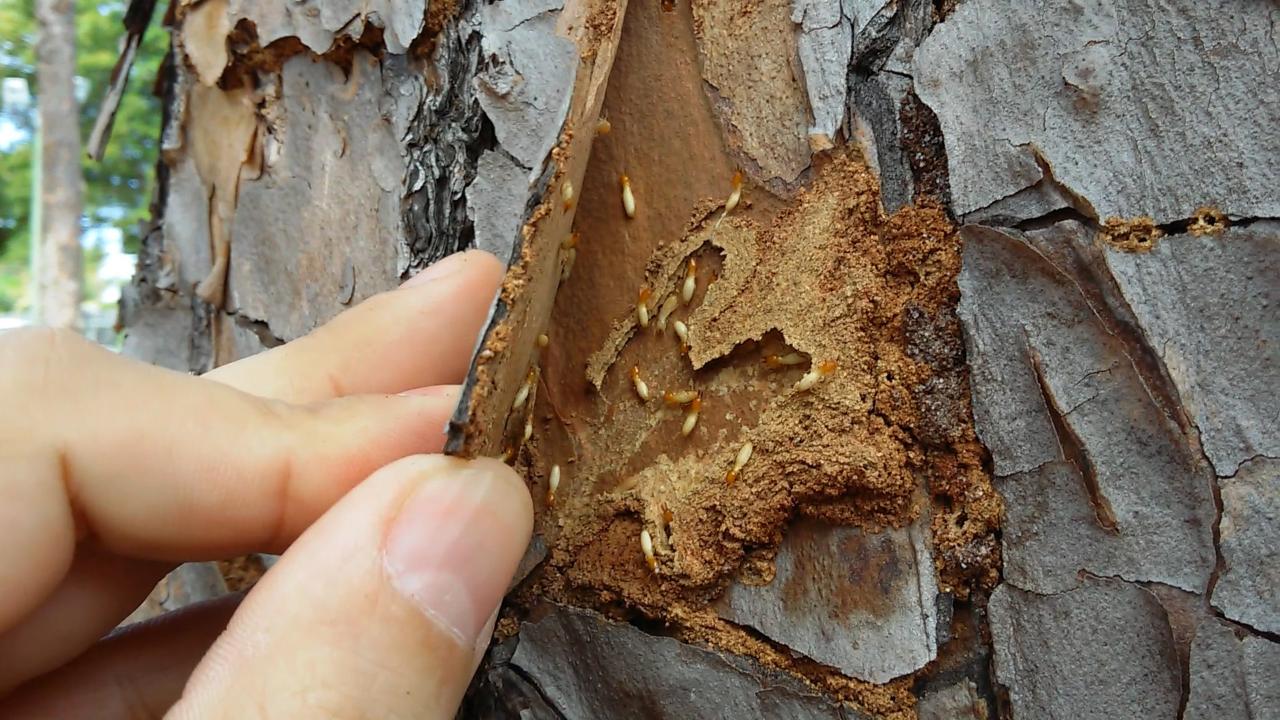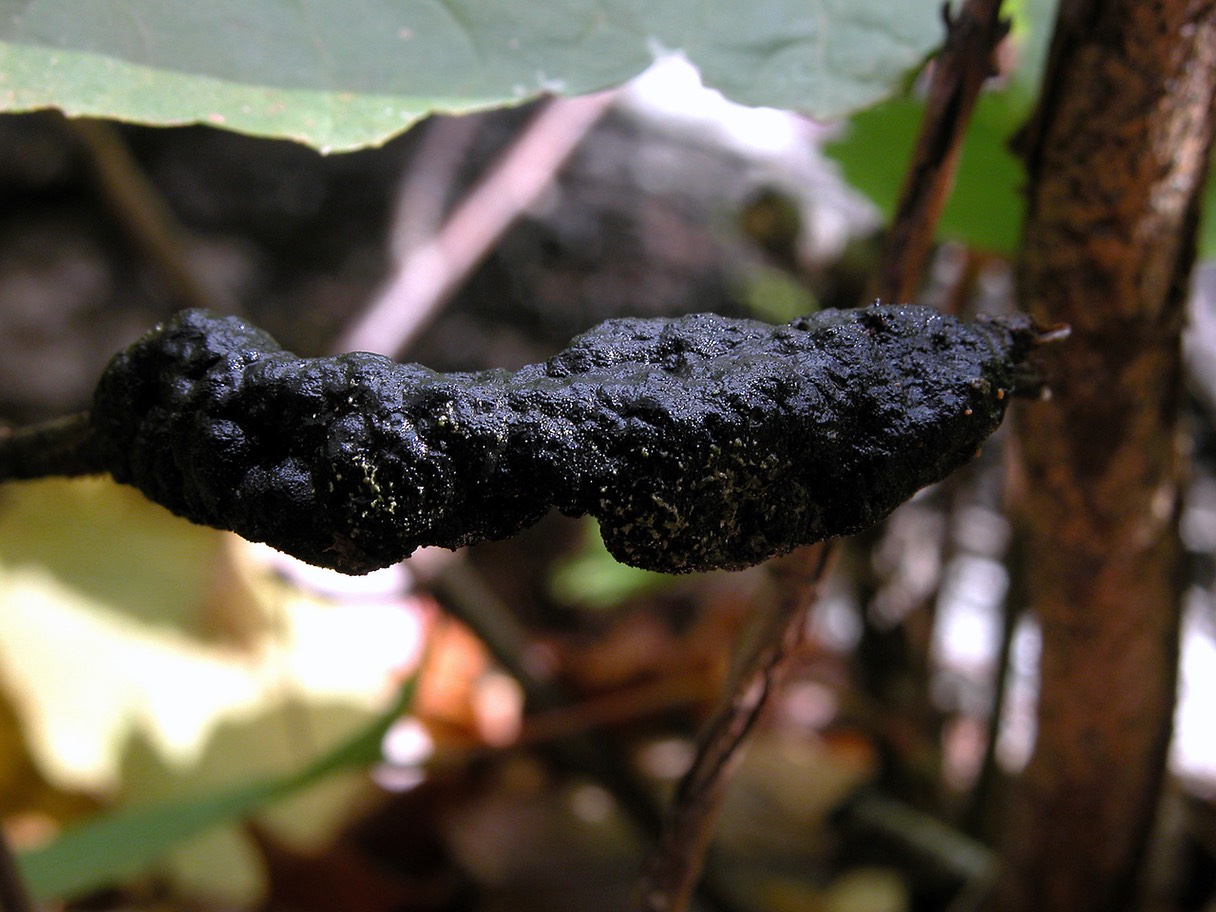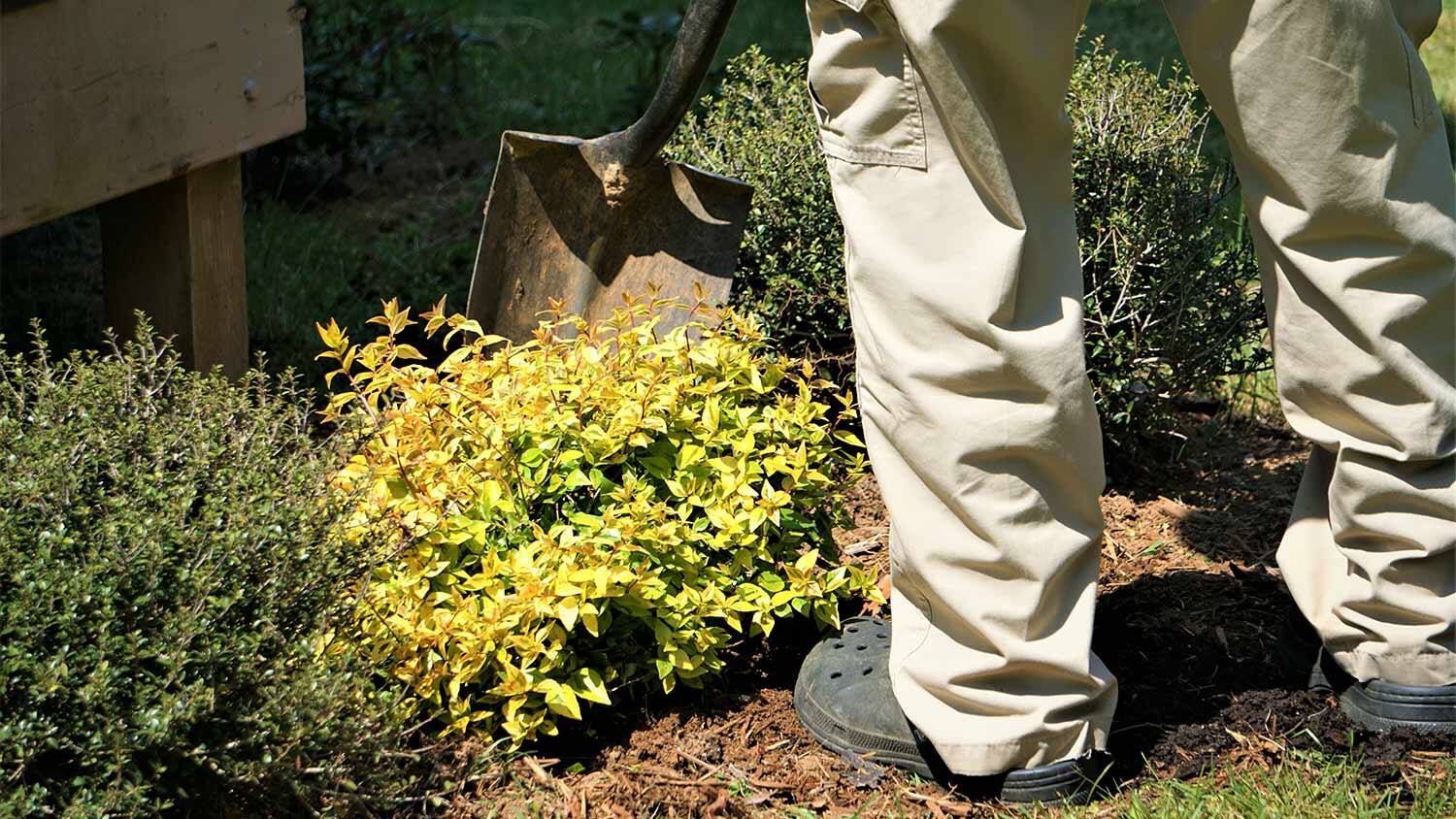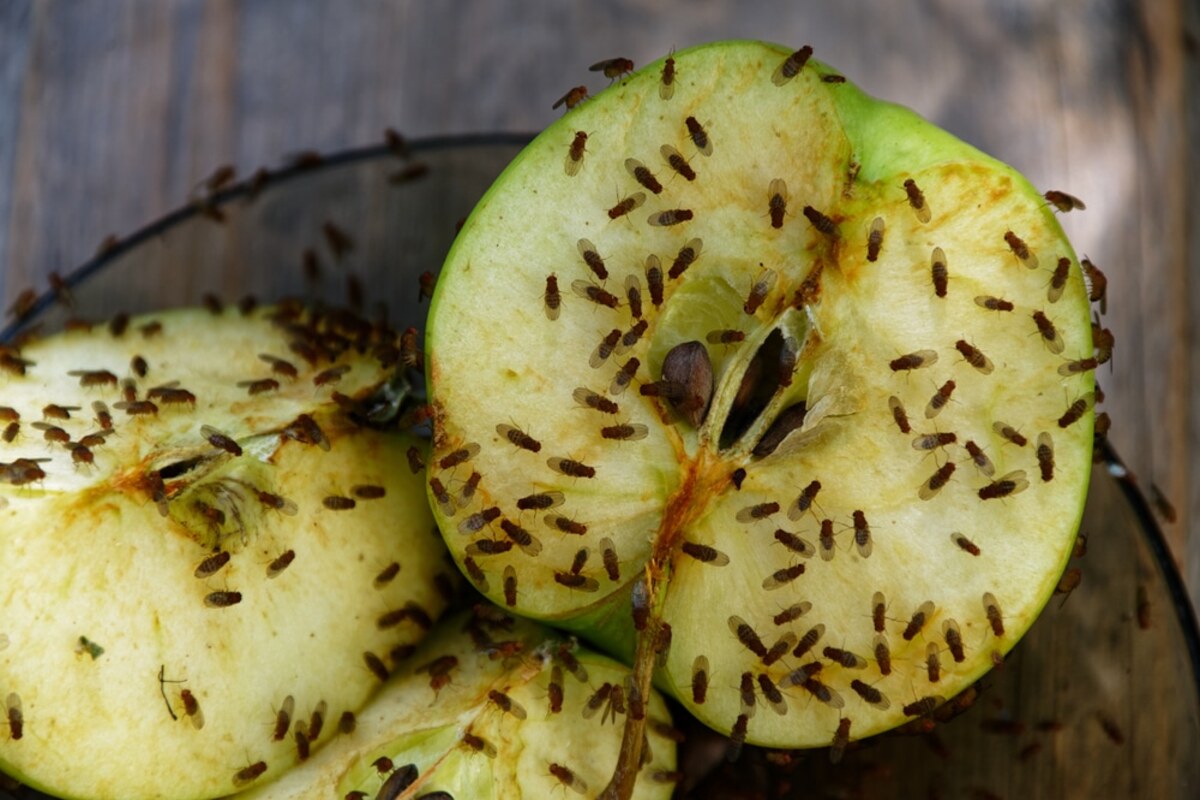Home>Gardening Tips and Tricks>Problem Solving>How To Get Rid Of Termites On Trees


Problem Solving
How To Get Rid Of Termites On Trees
Published: November 2, 2023
Looking for effective solutions to eliminate termites on trees? This guide offers problem-solving techniques to get rid of termites and protect your trees from further damage.
(Many of the links in this article redirect to a specific reviewed product. Your purchase of these products through affiliate links helps to generate commission for Chicagolandgardening.com, at no extra cost. Learn more)
Table of Contents
Introduction
Termites, the tiny but destructive pests, can cause significant damage to trees and pose a serious threat to their health and structural integrity. These wood-loving insects feed on cellulose, the main component of tree trunks and branches, and can cause extensive damage if left untreated. Identifying and addressing termite infestations on trees is essential to safeguard their lifespan and prevent potential hazards such as weakened branches or falling trees.
Termite infestations on trees are not always easy to detect, as the insects often establish their colonies deep within the tree’s interior. However, there are signs to watch out for, such as hollowed-out wood, discarded wings, and mud tubes on the trunk or branches. Taking preventive measures to protect trees from termite attacks is crucial, especially in areas where these pests are prevalent.
Fortunately, there are both natural and chemical methods to effectively get rid of termites on trees. Natural approaches include using materials like nematodes, beneficial insects, and certain plant extracts, while chemical solutions involve insecticides designed to eliminate termites. Depending on the severity of the infestation and personal preference, homeowners can choose between these methods to combat termite presence on their trees.
In some cases, professional pest control services may be necessary. These experts have the knowledge, tools, and experience to accurately identify termite infestations, create customized treatment plans, and effectively eliminate the pests. Seeking professional assistance can give homeowners peace of mind knowing that their trees are in the hands of experts.
In this article, we will explore the various methods and strategies for getting rid of termites on trees. From identifying termite infestations to implementing preventive and control measures, we will provide comprehensive guidance for homeowners looking to protect their trees from these damaging pests.
Identifying Termite Infestation on Trees
Identifying a termite infestation on trees is crucial in order to take prompt action and prevent further damage. While termites thrive in hidden areas, there are several signs that can indicate their presence:
- Hollowed-out wood: Termites consume the cellulose inside trees, leaving the wood hollowed out. If you tap on the trunk and it sounds hollow or if you notice wood crumbling easily, it might be a sign of termite infestation.
- Discarded wings: Swarmers, adult termites that have left the colony to mate and create new colonies, shed their wings once they find a suitable location. These discarded wings are often found near the base of the tree or on nearby surfaces.
- Mud tubes: Some termite species build mud tubes on the outside of tree trunks to protect themselves from predators and maintain a moist environment. These tubes are typically thin, pencil-sized, and may extend from the ground to the tree.
- Galleries or tunnels: If you notice intricate network-like patterns on the surface of the tree, it could be a termite gallery. These galleries are created by termites as they burrow through the wood.
- Weakened branches: Termites can weaken tree branches as they consume the wood, increasing the risk of branch breakage. If you notice branches that seem weakened or have fallen unexpectedly, it may indicate a termite infestation.
It’s important to note that termite infestations can occur both above and below ground. Therefore, inspecting the tree trunk, branches, and the soil around the tree is essential. If you suspect termite activity on your trees, consider contacting a professional arborist or pest control expert to conduct a thorough assessment.
Regular inspections of trees, especially those in high-risk areas or with a history of termite infestations, can help detect problems at an early stage. Being proactive in identifying termite infestations allows homeowners to take swift action and implement the necessary treatment to protect their trees.
Preventing Termite Infestation on Trees
Preventing termite infestation on trees is the most effective way to protect their health and longevity. Here are some preventive measures you can take:
- Maintain tree health: Healthy trees are less susceptible to termite attacks. Ensure that your trees receive proper nutrition, watering, and regular maintenance. Prune dead or diseased branches and monitor for signs of stress or disease that may attract termites.
- Plant termite-resistant species: Consider planting termite-resistant tree species in your landscape. Some varieties, such as cedar, redwood, and catalpa, have natural defenses against termites and are less likely to attract them.
- Keep tree trunks clear: Create a gap between the tree trunks and any surrounding structures, such as fences or buildings. This prevents direct access for termites and makes it easier to spot any potential termite activity.
- Avoid wood-to-soil contact: Do not allow tree branches or roots to come into direct contact with the soil, as this can provide termites with a direct pathway to the tree. Use proper planting techniques and consider installing barriers, such as metal or concrete, to prevent contact.
- Remove deadwood and debris: Deadwood and debris near trees can attract termites. Regularly clean up fallen leaves, twigs, and wood piles. Keep the area around the trees clean and well-maintained.
- Maintain proper drainage: Proper drainage around trees helps prevent excess moisture, which can attract termites. Ensure that the soil drains well and avoid overwatering.
- Use termite-resistant mulch: If you use mulch around your trees, choose termite-resistant options such as rubber mulch or gravel. These materials are less attractive to termites and can create a barrier.
By implementing these preventive measures, you can significantly reduce the risk of termite infestation on your trees. However, it’s important to remember that no prevention method is foolproof, and regular inspections are still necessary to catch any signs of termite activity early on.
Natural Methods to Get Rid of Termites on Trees
If you prefer to take an eco-friendly approach to controlling termite infestations on trees, there are several natural methods that can be effective:
- Nematodes: Beneficial nematodes are microscopic worms that can be used to control termites. These nematodes invade termite larvae and release bacteria that cause a fatal infection. Nematodes can be purchased from garden supply stores and should be applied according to the instructions.
- Boric acid powder: Boric acid is a natural substance that can be used to kill termites. It disrupts the termite’s digestive system, eventually leading to their demise. Mix boric acid powder with water and apply it to the affected area on the tree.
- Beneficial insects: Introduce natural predators of termites, such as ants or the praying mantis, to the area around your trees. These insects feed on termites and can help reduce the population.
- Plant extracts: Certain plant extracts have repellent properties that can deter termites. Mix neem oil, orange oil, or clove oil with water and apply it to the affected areas on the tree. These extracts are natural and safe for plants.
- Heat treatment: High temperatures can kill termites. Use a heat gun or a portable heat chamber to expose the infested area to high temperatures. Be cautious not to overheat the tree as it may cause damage.
It’s essential to note that natural methods may take time to show results and may require repeated applications for complete eradication. They are best suited for minor or moderate infestations. Regular monitoring and maintenance are also necessary to prevent re-infestation.
While natural methods can be effective, it’s important to keep in mind that severe termite infestations may require more aggressive treatments or professional assistance. If natural methods are not proving successful, or if the infestation is extensive, it may be necessary to explore chemical solutions or hire a pest control professional.
Chemical Solutions for Termite Control on Trees
In cases where natural methods do not provide satisfactory results or when dealing with severe termite infestations, chemical solutions can be an effective way to control termites on trees. Here are some commonly used chemical treatments:
- Insecticides: Insecticides specifically designed to target termites can be applied to the affected areas on the tree. These chemical treatments are available in liquid form or as foam. It’s important to follow the instructions carefully and use protective gear when handling insecticides.
- Trenching and soil treatment: This method involves creating a trench around the base of the tree and treating the soil with termiticides. The chemicals form a barrier that prevents termites from reaching the tree. This method is particularly effective for subterranean termites.
- Injection: Injections of termiticides directly into the affected areas of the tree can provide targeted control. This method helps deliver the chemicals precisely where the termites are active, ensuring effective elimination.
- Fumigation: In severe infestations where other methods prove ineffective, fumigation may be necessary. This process involves enclosing the tree in a tent or covering and introducing a gas that permeates the wood, killing the termites.
While chemical treatments can be highly effective in eradicating termites, it’s crucial to use them judiciously and with caution. Follow all safety guidelines outlined on the product labels and consider consulting a professional pest control service for proper application.
It’s worth noting that chemical treatments may have an impact on the environment and other organisms. Use them as a last resort and explore less invasive methods first. If possible, opt for low-toxicity or eco-friendly insecticide options.
Always prioritize your safety and the health of your trees when using chemical solutions. If you are unsure about the appropriate treatment or if the termite infestation persists despite your efforts, it’s advisable to seek the assistance of a professional pest control service.
Hiring Professional Pest Control Services
When facing a severe termite infestation on trees or if natural and chemical methods have been unsuccessful, it might be time to consider hiring professional pest control services. Here are a few reasons why seeking the assistance of experts is beneficial:
- Expertise and experience: Pest control professionals have extensive knowledge and experience in dealing with termite infestations. They can accurately identify the type of termites affecting your trees and determine the most effective treatment methods.
- Customized treatment plans: Professional pest control services will assess the severity of the infestation, the type of termites involved, and the condition of your trees. Based on this evaluation, they will create a customized treatment plan to effectively eliminate the termites and prevent future infestations.
- Safe and controlled application: Pest control professionals have access to specialized equipment and products that are not readily available to homeowners. They know how to safely handle and apply these solutions without causing harm to the trees or the environment.
- Insurance and warranties: Reputable pest control companies often provide warranties for their services. This means that if the termites return within a specific period after treatment, they will re-treat the affected areas at no additional cost.
- Preventive measures: Professional pest control services not only address existing termite infestations but also provide guidance on preventive measures to protect your trees from future attacks. They can offer advice on proper tree maintenance and recommend strategies to minimize the risk of termite recurrence.
When choosing a pest control service, consider researching and selecting a licensed and insured company with a proven track record in termite control. Look for customer reviews and testimonials to ensure their reliability and effectiveness.
Remember, hiring a professional pest control service is an investment in the health and well-being of your trees. It provides peace of mind knowing that experts are handling the situation, maximizing the chances of successful termite elimination and long-term protection.
Conclusion
Termites can pose a serious threat to the health and structural integrity of trees. Identifying termite infestations early on and taking appropriate measures is crucial to protect your trees and prevent further damage. Whether you choose natural methods, chemical solutions, or professional pest control services, there are effective ways to get rid of termites on trees.
Regular inspections and maintenance play a vital role in termite prevention. Maintaining tree health, planting termite-resistant species, and keeping the tree trunk clear of structures are important preventive measures. Removing deadwood, maintaining proper drainage, and using termite-resistant mulch can also discourage termite activity.
When it comes to treatment, natural methods such as nematodes, boric acid, beneficial insects, and plant extracts can be effective for minor infestations. Chemical solutions, including insecticides, trenching, injections, or fumigation, are suitable for more severe or hard-to-reach infestations.
In cases of extensive or persistent termite infestations, it’s wise to seek the assistance of professional pest control services. These experts have the expertise, experience, and resources to accurately identify the problem and develop a customized treatment plan. They can ensure safe and effective application of treatments and provide advice on preventive measures to maintain termite-free trees.
In conclusion, taking proactive measures to prevent termite infestations, identifying signs of infestation early, and selecting the appropriate treatment method are crucial for the health and longevity of your trees. Whether you choose natural methods, chemical solutions, or professional assistance, protecting your trees from termites is essential to maintain their beauty, value, and safety for years to come.










